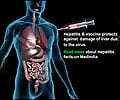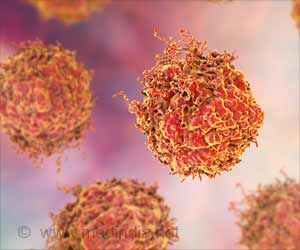A new mechanism discovered can turn off the switch to prevent tumor growth in liver cancer. The protein called LHPP (Phospholysine Phosphohistidine Inorganic Pyrophosphate Phosphatase) prevents the spread of cancer.

‘LHPP (Phospholysine Phosphohistidine Inorganic Pyrophosphate Phosphatase) is a protein that helps prevent the spread of cancer in the liver.’





The tumor suppressor, which could be useful as a biomarker to help diagnose and monitor treatment for liver cancer , could also be relevant for other cancer types. The work appeared in print in the journal Nature and adds to the growing body of knowledge about cellular processes that either promote or prevent cancer.
"I think we've discovered a new control mechanism for cell proteins that, when disrupted, could be a driver for cancer," says Tony Hunter, Salk's American Cancer Society Professor and an author on the new paper.
"It's exciting because it offers the possibility of new therapeutics or new diagnostics for a cancer that's basically untreatable liver cancer and potentially others, as well."
Hunter is known for his 1979 discovery of a molecular signaling process called tyrosine phosphorylation.
Advertisement
Hunter's breakthrough opened the door to the development of a new class of anti-cancer pharmaceuticals called tyrosine kinase inhibitors, including the life-saving leukemia drug Gleevec.
In the new work, the international team, led by Professor Michael Hall of the Biozentrum, University of Basel, examined these switches in a mouse model of the most common form of primary liver cancer hepatocellular carcinoma.
To compare tumor cells with normal cells, the team analyzed more than 4,000 proteins in healthy and diseased liver tissue. By the end, three proteins stood out: the histidine kinases NME1 and NME2 were elevated in tumor cells, and the suspected histidine phosphatase LHPP was deficient.
"It is striking that LHPP is present in healthy tissue and completely absent in tumor tissue," says Sravanth Hindupur, a postdoctoral researcher at the University of Basel and the paper's first author. That gave the researchers a clue to explore histidine phosphorylation as a potential cancer target.
Indeed, they found that the levels of protein phosphorylated in histidine were significantly higher in the tumor tissue than in normal liver tissue.
NME1 and NME2 are known histidine kinases and LHPP had been suspected to be a histidine phosphatase. With further experiments, the team verified that not only is LHPP a histidine phosphatase, but it is also a tumor suppressor essentially an "off" switch for cancer.
Reintroducing LHPP into the liver of the model mice destined to develop tumors prevented the formation of tumors.
When the researchers next examined samples from human liver tumors, they found a similar pattern: NME1 and 2 levels were high and LHPP was low compared to healthy liver tissue.
Furthermore, the Cancer Genome Atlas database, a collection of RNA sequences obtained from different human cancers, showed that a significant fraction of human liver cancers have low levels of LHPP, and that both disease severity and life expectancy are correlated with LHPP levels.
"The parallels between tyrosine phosphorylation and histidine phosphorylation are what really got me interested in the project," adds Hunter. "Whether this can be used as a therapeutic avenue, I don't know. But the fact that it could be so disease-relevant motivates me."
Source-Eurekalert














